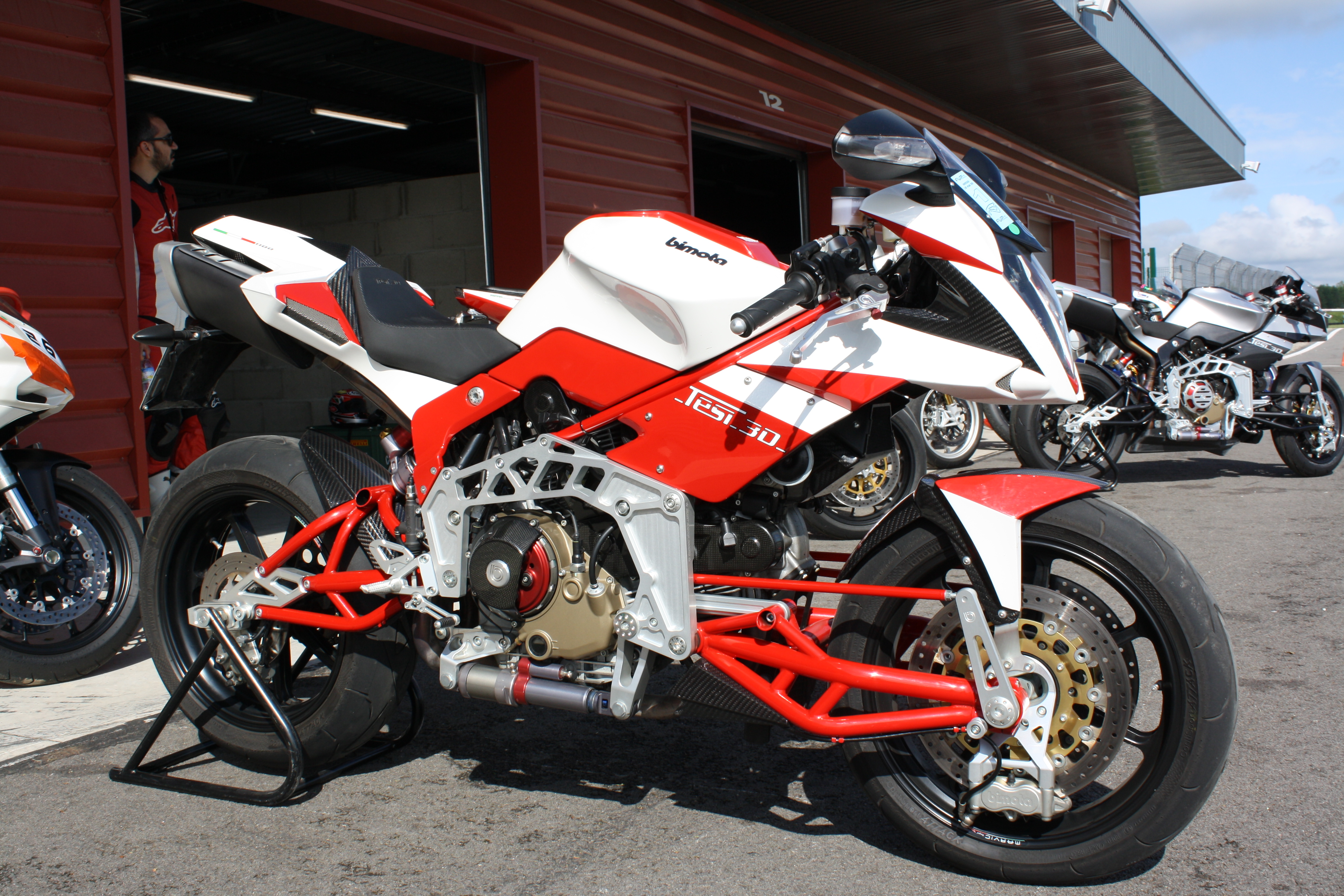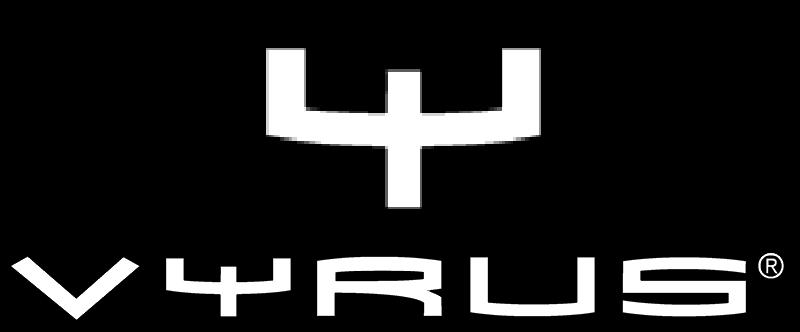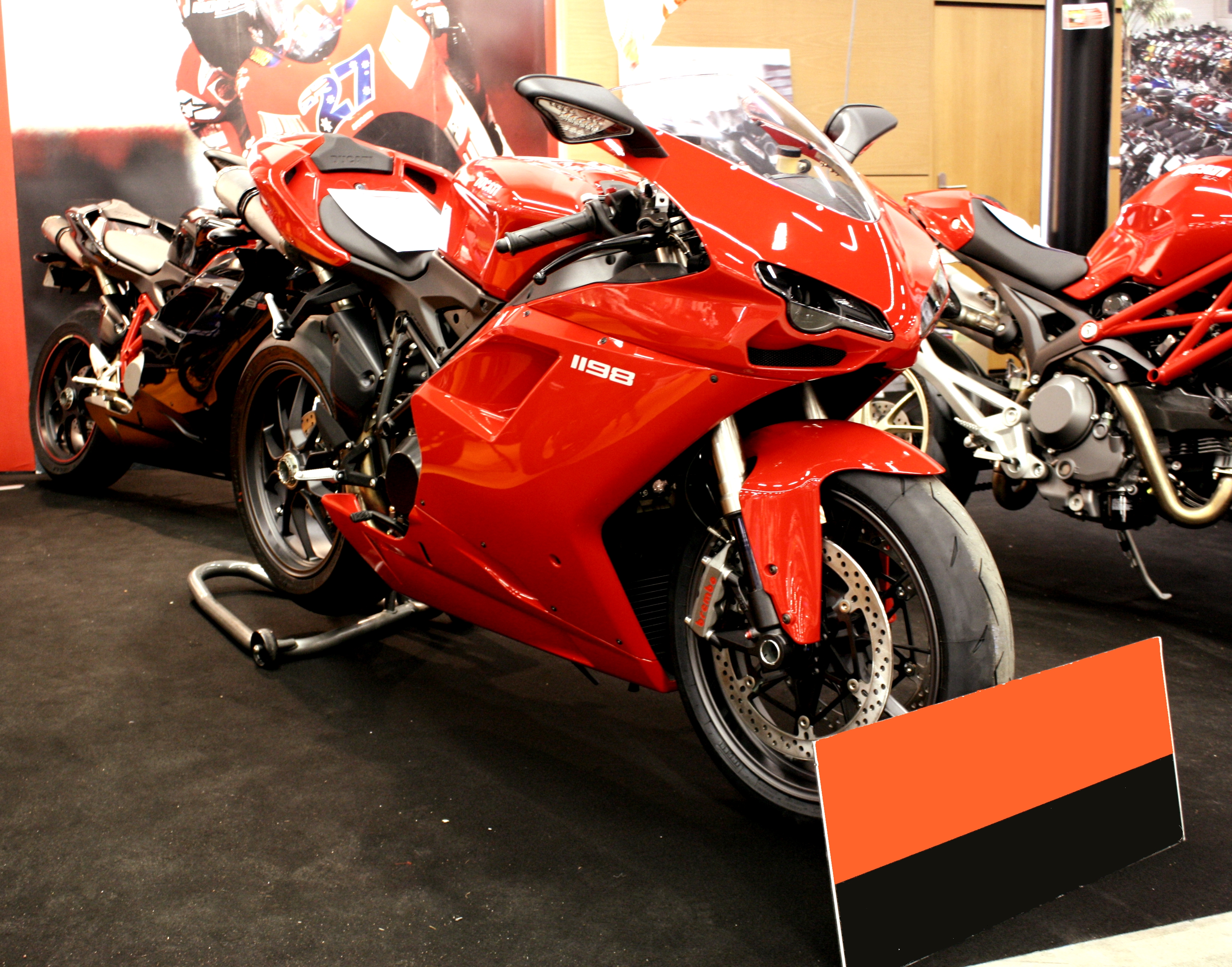|
Bimota Motorcycles
Bimota is an Italian manufacturer of Custom motorcycle, custom and production motorcycles. It was founded in 1973 in Rimini by Valerio Bianchi, Giuseppe Morri, and Massimo Tamburini. The company name is a portmanteau derived from the first two letters of each of the three founders' surnames: Bianchi, Morri, and Tamburini. Products Because the state of Motorcycle frame, frame design was stagnant in the 1970s, Bimota concentrated initially on building high-quality motorcycle chassis around existing engines. From the beginning they customised the top models of Suzuki, Honda and Kawasaki Heavy Industries, Kawasaki. During the late 1970s, Bimota also helped develop and build motorcycles branded as Lamborghinis. In the 1980s they also customised Yamaha Motor Corporation, Yamaha and Ducati motorcycles. Bimota's co-founder and long-time chief designer Massimo Tamburini, Tamburini has been an influential player in the development of other Italian brands, most significantly his work on t ... [...More Info...] [...Related Items...] OR: [Wikipedia] [Google] [Baidu] |
Autodromo Enzo E Dino Ferrari
The Autodromo Internazionale Enzo e Dino Ferrari, better known as Imola, is a motor racing circuit in the town of Imola, in the Emilia-Romagna region of Italy, east of Bologna. It is one of the few major international circuits to run in an anti-clockwise direction. The circuit is named after Ferrari's late founder, Enzo Ferrari (1898–1988), and his son, Alfredo "Dino" Ferrari (1932–1956). Before Enzo's death, it was called Autodromo Dino Ferrari. The circuit has an FIA Grade One licence. Imola was the venue for the San Marino Grand Prix between 1981 and 2006. During this period, two Grands Prix were held in Italy every year, with the Italian Grand Prix taking place at Monza, so the Imola race was named after the nearby state. Imola also hosted the 1980 Italian Grand Prix in place of Monza. When Formula One visits Imola, it is seen as the home circuit of Scuderia Ferrari, and masses of supporters come out to support the local team. The venue returned to the Formula One ... [...More Info...] [...Related Items...] OR: [Wikipedia] [Google] [Baidu] |
Yamaha Motor Corporation
is a Japanese multinational manufacturer of motorcycles, marine products such as boats and outboard motors, and other motorized products. The company was established in 1955 upon separation from Yamaha Corporation (however, Yamaha Corporation is still the largest private company shareholder with 9.92%, as of 2019), and is headquartered in Iwata, Shizuoka, Japan. The company conducts development, production and marketing operations through 109 consolidated subsidiaries as of 2012. Led by Genichi Kawakami, the company's founder and first president, Yamaha Motor spun off from musical instrument manufacturer Yamaha Corporation in 1955 and began production of its first product, the YA-1 125cc motorcycle. It was quickly successful and won the 3rd Mount Fuji Ascent Race in its class. The company's products include motorcycles, scooters, motorized bicycles, boats, sail boats, personal water craft, swimming pools, utility boats, fishing boats, outboard motors, 4-wheel ATVs, recreat ... [...More Info...] [...Related Items...] OR: [Wikipedia] [Google] [Baidu] |
List Of 350cc Motorcycle World Champions
Grand Prix motorcycle racing is the premier championship of motorcycle road racing, which has been divided into three classes since 1990: 125cc, 250cc and MotoGP. Classes that have been discontinued include 350cc, 50cc/80cc and sidecar A sidecar is a one-wheeled device attached to the side of a motorcycle, scooter, or bicycle, making the whole a three-wheeled vehicle. A motorcycle with a sidecar is sometimes called a ''combination'', an ''outfit'', a ''rig'' or a ''hack''. .... The Grand Prix Road-Racing World Championship was established in 1949 by the sport's governing body, the Fédération Internationale de Motocyclisme (FIM), and is the oldest motorsport World Championship. The 350cc class existed from 1949 until 1982. The 350cc referred to the size of the engines of the motorcycles that participated in the class. The engines had four cylinders, similar to the types of engines used in MotoGP today. Each season consisted of 5 to 11 Grands Prix contested on closed circu ... [...More Info...] [...Related Items...] OR: [Wikipedia] [Google] [Baidu] |
Privateer (motorsport)
In motorsport, a privateer is usually an entrant into a racing event that is not directly supported by an automobile or motorcycle manufacturer. Privateers teams are often found competing in rally, circuit racing and motorcycle racing events and often include competitors who build and maintain their own vehicles and motorcycles. In previous Formula One seasons, privately owned teams would race using the chassis of another team or constructor in preference to building their own car; the Concorde Agreement now prohibits this practice. Increasingly the term is being used in an F1 context to refer to teams who are not at least part-owned by large corporations, such as Williams F1. Many privateer entrants compete for the enjoyment of the sport, and are not paid to be racing drivers. See also *Contrast: Factory-backed In motorsports, a factory-backed racing team or driver is one sponsored by a vehicle manufacturer in official competitions. As motorsport competition is an expen ... [...More Info...] [...Related Items...] OR: [Wikipedia] [Google] [Baidu] |
Jon Ekerold
Jonathan "Jon" Ekerold (born 8 October 1946) is a South African former professional Grand Prix motorcycle road racer. Born in Johannesburg, South Africa, Ekerold is one of the few racers in the modern era to have won a world championship as a privateer without the benefit of a motorcycle manufacturer's support when he defeated Kawasaki factory racing team rider Anton Mang for the 1980 350cc Grand Prix road racing world championship. Ekerold rode a self-modified Yamaha TZ350 engine in a Bimota chassis during his championship season. He also won the Ulster Grand Prix once and finished second at the Isle of Man TT twice. Motorcycle Grand Prix results (key Key or The Key may refer to: Common meanings * Key (cryptography), a piece of information that controls the operation of a cryptography algorithm * Key (lock), device used to control access to places or facilities restricted by a lock * Key (map ...) (Races in bold indicate pole position; races in ''italics'' indicate ... [...More Info...] [...Related Items...] OR: [Wikipedia] [Google] [Baidu] |
1980 Grand Prix Motorcycle Racing Season
The 1980 Grand Prix motorcycle racing season was the 32nd F.I.M. Road Racing World Championship season. Season summary Yamaha's Kenny Roberts claimed his third successive 500cc world championship in a season shortened by the cancellations of the Venezuelan and Austrian rounds. Randy Mamola took over at Suzuki from Barry Sheene. Kawasaki returned to the 500cc class with a monocoque, four cylinder bike for Kork Ballington. Honda soldiered on with its exotic four-stroke NR500 but began to realize it was at a disadvantage against its two-stroke opposition. There were only six rounds in the 350cc class that saw South Africa's Jon Ekerold, a true privateer, take the championship from the Kawasaki factory-sponsored Anton Mang. Mang would take the 250cc crown from defending champion Ballington while Pier Paolo Bianchi won the 125cc title. Eugenio Lazzarini won a tight battle from Swiss Stefan Dörflinger to take the 50cc championship by only 2 points. 1980 Grand Prix season calend ... [...More Info...] [...Related Items...] OR: [Wikipedia] [Google] [Baidu] |
Hub-center Steering
Hub-center steering (HCS) is one of several different types of front-end suspension/steering mechanisms used in motorcycles and cargo bicycles. Hub-center steering is characterized by the steering pivot points being inside the hub of the wheel, rather than above the wheel in the headstock as in the traditional layout. Most hub-center arrangements employ a swingarm that extends from the bottom of the engine/frame to the center of the front wheel. The advantages of using a hub-center steering system instead of a more conventional motorcycle fork are that hub-center steering separates the steering, braking, and suspension functions. With a fork the braking forces are put through the suspension, a situation that leads to the suspension being compressed, using up a large amount of suspension travel which makes dealing with bumps and other road irregularities extremely difficult. As the forks dive, the steering geometry of the bike also changes, making the bike more nervous, and inv ... [...More Info...] [...Related Items...] OR: [Wikipedia] [Google] [Baidu] |
Vyrus
Vyrus is a small, exclusivist Italian motorcycle manufacturer based in Coriano, Italy. Vyrus initially worked alongside Bimota on the evolutionary development of Bimota's "Tesi" motorcycle. The "Tesi", meaning ''Thesis'' in Italian, had its origins as a university engineering project linked to Massimo Tamburini. The Tesi design was easily distinguished by the use of its hub-center steering front suspension arrangement. Vyrus split from the Bimota and completed the first evolution of the Tesi's development, marketing the bike under their own name. Currently Vyrus has four models: 984 C3 2V (Ducati-sourced 2-valve 1000 cm3 air-cooled engine developing 100bhp), 985 C3 4V (Ducati-sourced 4-valve 1000 cm3 water-cooled engine developing 155bhp), 987 C3 4V (Ducati-sourced 4-valve 1200 cm3 water cooled engine developing 184bhp) and the 987 C3 4VV (Ducati-sourced 4-valve 1200 cm3 supercharged water cooled engine developing 211bhp). Vyrus is very much a "bespoke" manuf ... [...More Info...] [...Related Items...] OR: [Wikipedia] [Google] [Baidu] |
Bimota Tesi
Bimota is an Italian manufacturer of custom and production motorcycles. It was founded in 1973 in Rimini by Valerio Bianchi, Giuseppe Morri, and Massimo Tamburini. The company name is a portmanteau derived from the first two letters of each of the three founders' surnames: Bianchi, Morri, and Tamburini. Products Because the state of frame design was stagnant in the 1970s, Bimota concentrated initially on building high-quality motorcycle chassis around existing engines. From the beginning they customised the top models of Suzuki, Honda and Kawasaki. During the late 1970s, Bimota also helped develop and build motorcycles branded as Lamborghinis. In the 1980s they also customised Yamaha and Ducati motorcycles. Bimota's co-founder and long-time chief designer Tamburini has been an influential player in the development of other Italian brands, most significantly his work on the popular Ducati 916, the Ducati Paso, and the MV Agusta F4; other designers such as Bimota chief ''Sergi ... [...More Info...] [...Related Items...] OR: [Wikipedia] [Google] [Baidu] |
Ducati 1198
The Ducati 1198 is a sport bike made by Ducati from 2009 to 2011. For the 2011 model year there were two models: the 1198 and 1198SP (replacing the 1198S). The 1198 shared design elements with its predecessor 1098, but has more power and torque, redesigned wheels, lighter headlights, traction control, and lighter fairings (on the S model), and a few minor paint changes. One carryover from its 998 heritage is the distinctive single-sided swingarm. Performance Ducati claim that the 1198/1198 SP makes 127kW (170hp), 132Nm (97 lbf ft) torque, and has a dry weight of . Rear wheel output was tested as @ 9,600 rpm and 122.21 Nm (90.14 lbf) torque at 8,300 rpm, with a wet weight of . The 1198 R makes a manufacturer claimed and 134.4 Nm (99.1 lbf) torque. Specifications All specifications are manufacturer claimed unless noted otherwise: Motorsport Carlos Checa won both the riders and manufacturers title during the 2011 Superbike World Championship season The 2011 Super ... [...More Info...] [...Related Items...] OR: [Wikipedia] [Google] [Baidu] |
MV Agusta F4 Series
The MV Agusta F4 is an inline four-cylinder sport bike made by MV Agusta from 1999 until 2018. It was the motorcycle that launched the resurrection of the brand in 1998. The F4 was created by motorcycle designer Massimo Tamburini at CRC (Cagiva Research Center), following his work on the Ducati 916. The F4 has a single-sided swingarm, large diameter () front forks and traditional MV Agusta red and silver livery. The F4 engine is also one of the few production superbikes to have a hemi-spherical cylinder head chamber design with 4 valves per cylinder. Engine The F4 engine is a liquid cooled inline four cylinder four-stroke set across the frame with two overhead camshafts (DOHC), 16 'radial' valves, electronic multipoint fuel injection, and induction discharge electronic ignition having engine displacements of , , and . The engine was derived from the 1990–1992 Ferrari Formula One engine. Early in the design process Ferrari engineers assisted in the development of the engin ... [...More Info...] [...Related Items...] OR: [Wikipedia] [Google] [Baidu] |


.jpg)



